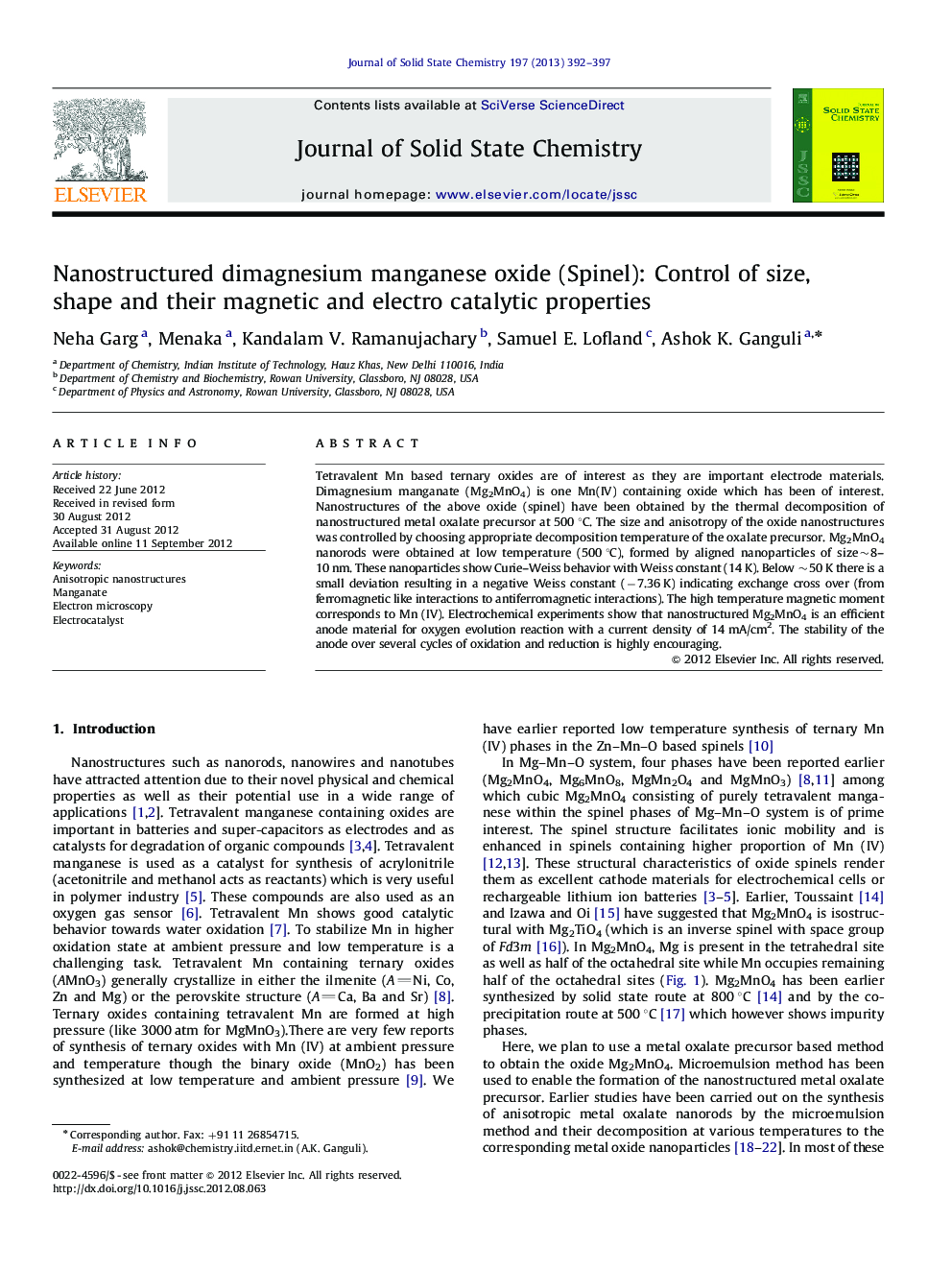| Article ID | Journal | Published Year | Pages | File Type |
|---|---|---|---|---|
| 1330122 | Journal of Solid State Chemistry | 2013 | 6 Pages |
Tetravalent Mn based ternary oxides are of interest as they are important electrode materials. Dimagnesium manganate (Mg2MnO4) is one Mn(IV) containing oxide which has been of interest. Nanostructures of the above oxide (spinel) have been obtained by the thermal decomposition of nanostructured metal oxalate precursor at 500 °C. The size and anisotropy of the oxide nanostructures was controlled by choosing appropriate decomposition temperature of the oxalate precursor. Mg2MnO4 nanorods were obtained at low temperature (500 °C), formed by aligned nanoparticles of size∼8–10 nm. These nanoparticles show Curie–Weiss behavior with Weiss constant (14 K). Below ∼50 K there is a small deviation resulting in a negative Weiss constant (−7.36 K) indicating exchange cross over (from ferromagnetic like interactions to antiferromagnetic interactions). The high temperature magnetic moment corresponds to Mn (IV). Electrochemical experiments show that nanostructured Mg2MnO4 is an efficient anode material for oxygen evolution reaction with a current density of 14 mA/cm2. The stability of the anode over several cycles of oxidation and reduction is highly encouraging.
Graphical abstractNanostructured dimagnesium manganese with efficient electrocatalytic property synthesized by reverse micellar route.Figure optionsDownload full-size imageDownload as PowerPoint slideHighlights► Mg2MnO4 nanorods were synthesized by reverse micellar route. ► Anisotropy of oxalate rods retained in oxides nanorods. ► Nanorods show good catalytic behavior towards oxygen evolution reaction.
